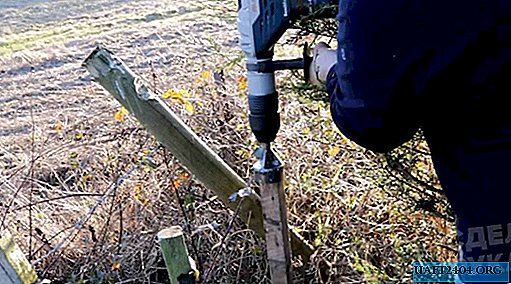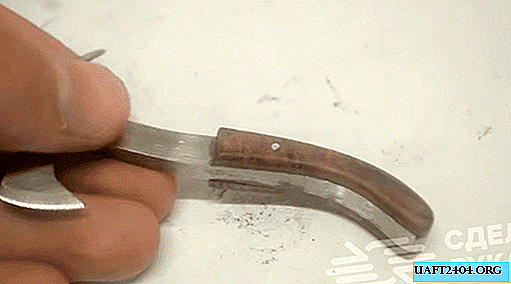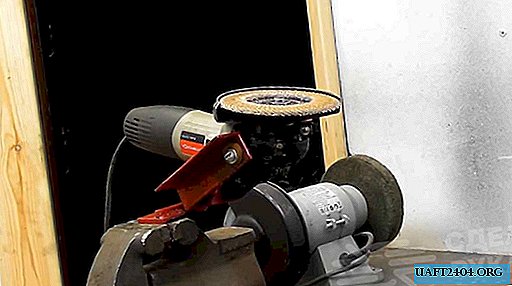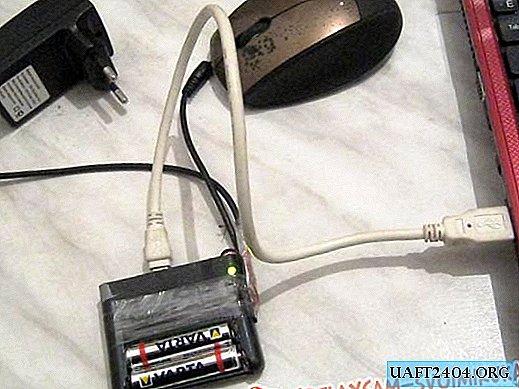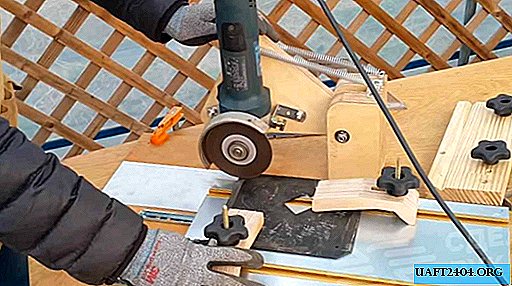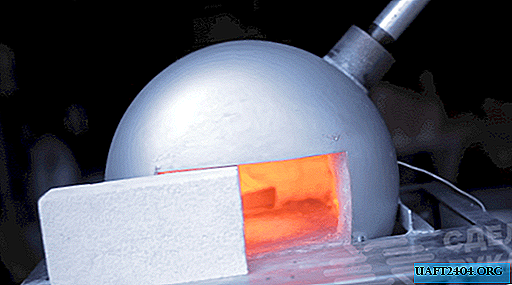Share
Pin
Tweet
Send
Share
Send
A conventional fan has several disadvantages: noise and vibration from the blades, which collect dust and air pollution. In order to clean them, it is necessary to remove the protective grill. The speed of such fans is regulated in only a few modes, and it is difficult to adjust the angle of airflow at all.
Our alternative device is free from these drawbacks. This development was invented by Dyson engineers, presenting a practically revolutionary solution in the field of air ventilation. Thanks to them, the world learned what a fanless fan is. And today we will collect it at home.
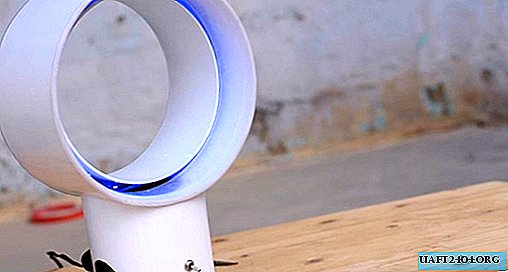
The principle of operation of the fanless fan
The main difference between a fanless fan and a regular one is the changed direction of the expelled air flow. This is achieved due to the fact that the engine with the impeller is placed vertically and hidden in the base, which is equipped with grilles. Through them, air flows into a frame located above the base and provided with slots around the perimeter for ventilation.
Materials, tools for fanless fan
To build this ultra-modern household gadget, we need the following materials:
- Pieces of PVC pipes with a diameter of 150, 125, 90 mm;
- Quick-drying adhesive for plastic, such as superglue;
- A small piece of plexiglass or plexiglass blue;
- Server cooler YW880, frame width-60 mm;
- White spray paint, 1 balloon;
- A piece of soft metal mesh with cells of about 10 mm;
- Rheostatic speed control board, toggle switch;
- Solder, flux, thermocambric, self-tapping screws;
- A piece of LED strip, length - about 50 cm;
- Power supply (adapter) for 12V / 2 A;
- Insulating tape.
Of the tools we need:
- Miter saw or grinder (angle grinder) for trimming pipes made of PVC pipes;
- Jigsaw for cutting crooked lines;
- Drill or screwdriver with a mill-crown for 50-60 mm;
- A set of drills of various diameters;
- Soldering iron, screwdriver, scissors, pliers, hot glue gun;
- Paint knife.
The order of work
We prepare plastic pipes
We take a piece of PVC pipe with a diameter of 150 mm and end it, aligning the edges. We mark a fragment with a length of about 100 mm, and make a cut with a miter saw or grinder (angle grinder).



The edges of all nozzles must be treated with sandpaper to avoid burrs, bumps and improve the fit of the edges for adhesive bonding.

The next step will be the selection of a plastic container that will fit snugly onto our pipe section. With a paint knife, we cut off the bottom of it, and with the help of superglue we fix it on top of the nozzle.



Then we take a pipe with a diameter of 125 mm, and cut off a pipe with a length of 90 mm from it.



Next will be a pipe with a diameter of 90 mm, which we also cut, like the two previous ones. This is the base of our fan. The length of the segment is 120-130mm.

Basic plastic parts are ready. You can check how they will fit together, putting them in their places.



The fan frame sits on the base perpendicularly, so the 90 mm nozzle needs to be slightly prepared by cutting off its edge according to the frame circumference. We mark it with a pencil, you can cut it with a jigsaw or the same grinder.


The irregularities of the curved cut can be smoothed out with sandpaper, removing burrs at the same time.

Using a crown cutter with a diameter of 50-60 mm, a drill or a screwdriver, we make a through hole in the middle of the largest nozzle. It will allow air to flow through the base into our frame. We fix our base on superglue.


In order to close the fan frame, which consists of two pipe segments of different diameters, a plug is glued on the smaller of them from one end. We make it from a sheet of Plexiglas or Plexiglass blue.

Marking first a large circle, and then a smaller one, cut off the stub ring.

Now it can be planted on superglue to a smaller nozzle of the frame.

Using white spray paint and electrical tape as a masking tape for plexiglass, we paint over the plastic parts of our fan.



After the paint has dried, you can glue a piece of LED strip on the larger nozzle from the side of the plug. Do not forget to immediately solder the contacts for the LED backlight, and display them at the base.
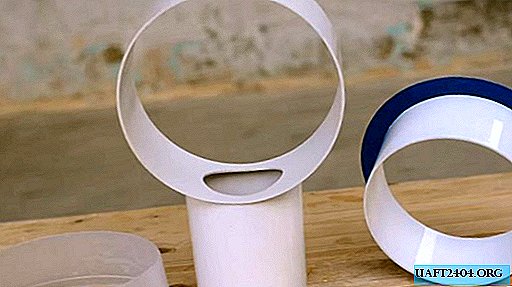

We fix both pipes of our frame to superglue.


Electrical part
We begin to prepare the electric filling of our fan by soldering the cooler contacts. It is better to take the wires with a margin so that it is convenient for them to work when connecting the control board and the toggle switch.

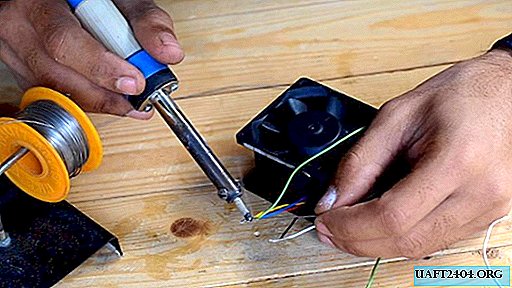

Fixing holes can be made with a soldering iron to securely fasten the cooler in the base case.

We fix the cooler, and drill two ventilation holes in the base opposite each other. This can be done with the same crown mill.
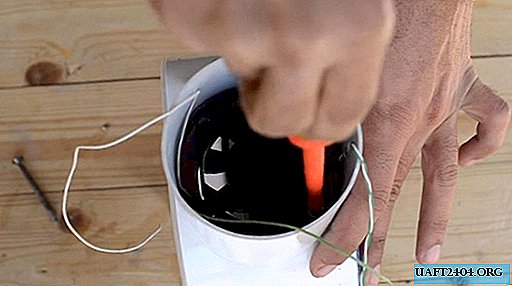


We cover these holes with fragments of a metal mesh, previously cut to size.

Glue the grid fragments with a hot glue gun.

We solder the contacts of the toggle switch and the power socket. We close the bare contacts with heat-shrink cambrices, warming them with a lighter.


Now you can make holes for the toggle switch and power socket, and fix them on the fan base case.



For rheostatic switching of the fan speed, the author ordered a finished board with parts that he himself soldered. Today it is a more affordable option, although such a fee can be bought in the store of electronic little things in the finished form.


We connect our control board by soldering the contacts and fix it due to the fastening of the rheostat on the wall of the case. We complete the fasteners with hot glue.



Our fan of the future is almost ready. All that remains is to fix the bottom of the remnants of plexiglass, and glue the rubber glides for greater stability.



The fan is powered by a conventional adapter with a suitable connector on the end. The values of the output voltage and current must correspond to the selected cooler.


It's time to turn on the miracle fan and check it in action.


The aerodynamic frame of this device distributes the air flows evenly, accelerating them by almost 15 times. Such an advanced fan will help to cope with the heat much faster and more efficiently than ordinary household. And the soft glow of the backlight will create a pleasant atmosphere of coolness on a hot summer day.
Watch the video fan manufacturing instructions
Share
Pin
Tweet
Send
Share
Send

